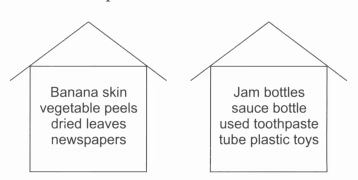MAHA TET Paper 1: Environmental Studies Test - 7 - MAHA TET MCQ
30 Questions MCQ Test MAHA TET Mock Test Series 2025 - MAHA TET Paper 1: Environmental Studies Test - 7
Which of the following is/are causing the maximum damage to the ecology?
After the lunch break, while teaching EVS, you find that some students are not taking interest in the lesson. What would you do?
One pashmina shawl is as warm as _____ normal sweaters and _____ hours are taken to weave a plain Pashmina shawl.
The animals that live mostly on trees are referred to as
Choose the correct option that comes in the sub-theme category of environmental study?
Engage, Explore, Explain, Elaborate and Evaluate are 5 important E's in relation to effective teaching of science.
To provide practical experiences to the students related to the concept of 'Necessary conditions for germination', a science teacher asks them to do the following activities:
a. Soak seeds overnight and keep them in a wet cotton cloth.
b. Observe the seeds after 2 days and record the changes.
c. Read the book and attempt the given worksheet.
Q. Which of the following E's are not being covered in the above activities given by the teacher?
Rina separated the garbage from the house into two piles as shown below:

Rina has separated the garbage waste into two piles depending on the criteria:
Sahil wants to organize the activity to teach the topic “Nutrition” to his class V students. He should:
Which of the following suitably describe(s) a planet?
Which one of the following is not a suitable Formative Assessment task in EVS?
Match List-I with List-II and select the correct answer using the code given below the lists.

Directions: Answer the following question by selecting the most appropriate option.
A school planned an educational trip for Class-V students to Rajasthan. What would be your expectation from the children during the visit?
Neha uses the following assessment techniques in the subject of EVS for class V:
1) Hands-on activities assessment
2) Home assignment assessment
3) Project work assessment
4) Oral testing
Which one of the following pairs of techniques is likely to be a more objective assessment?
Arpita is a primary school teacher, She wants to organize a science exhibition in school. According to you which objective is fulfilled by this?
Which soil is known to hold large amount of water?
The section on 'Survey and Write' in some chapter of EVS textbook for Class-V primarily aims at:
In the EVS classroom, the teacher is teaching the topic "Sunita in Space" and sharing experiences of Sunita Williams living in space to make students familiar with the life of space. She chooses the discussion method to teach this topic. Which of the following can be used to initiate the discussion?
"Nature has enough to meet the need of the people but not the greed." Who said this?
Select the correct statement about bronze which was used in making big guns (cannons) found in the fort of Golconda.
Which of the following is a conventional source of energy?
After having been taught about the rich flora and fauna in India, the students of primary classes were taken to Ranthambore National Park by the school. This would help the students to
A lemon sinks in normal water but floats in salty water because the density of:
Which of the following question should be used by a teacher while assessing the students of class III comprehensively on the theme "shelter"?
(I) How big is your school? What kind of building is it?
(II) Please draw a picture of your school and classroom.
(III) Please explain to someone the way to reach the post office or the bus stand from your house.
An experienced EVS teacher does not require the detailed lesson plan of a topic because
With respect to the location of Delhi on the map of India, the capital of Himachal Pradesh (Shimla) and the capital of Madhya Pradesh (Bhopal) are located respectively in its:
In an EVS class, a teacher asked the students to tell the difference between different types of "shelters". Which of the following objectives under Bloom's taxonomy is being targeted by the teacher?
Directions: Answer the following question by selecting the most appropriate option.
While making groups for an activity, an EVS teacher should
Which is not an example of chemical fertilizer?
Which of the following is/are way(s) of using media as a resource for teaching learning of EVS?
I. Children can read scientific or environment-related stories from magazines and newspapers.
II. Children can make poster paintings to express their idea and views on relevant environmental concerns.
III. Using ‘newspaper cutting’ related in EVS students can undertake research work or project an identified theme Resources work or project an identified theme in EVS
|
100 tests
|



















